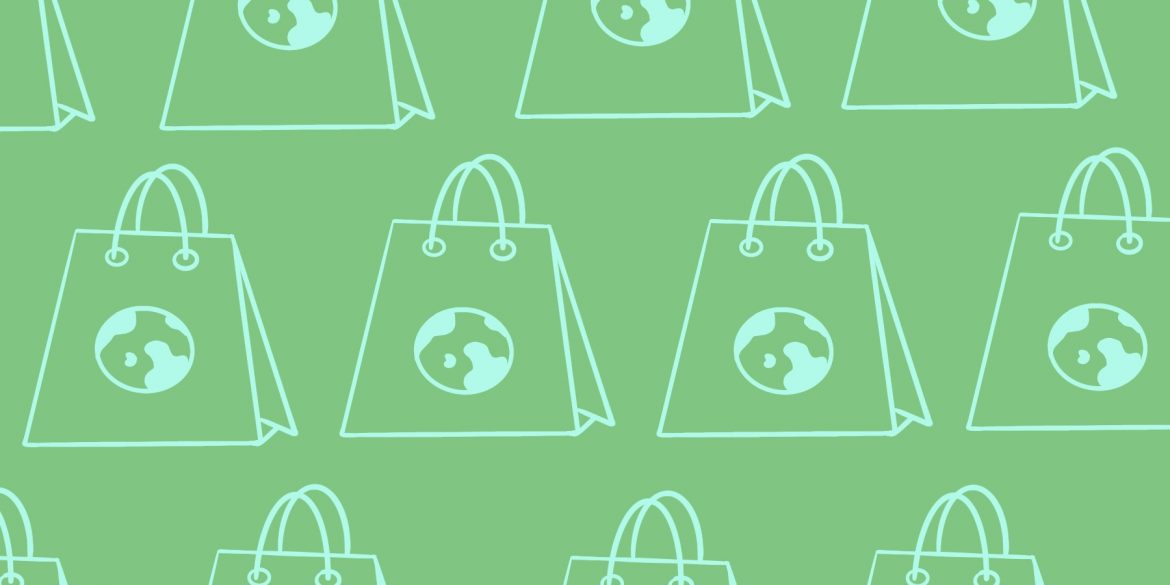Everyone likes to be on trend. Whether it’s switching up your style after finding inspiration from your favorite influencer or following a popular TikTok trend, fashion is ever-evolving. However, this constant evolution leads to one thing: waste.
The fashion industry has morphed from a way for individuals to express their unique sense of style and self to the second largest producer of worldwide pollution. From water pollution to waste accumulation to rainforest destruction — the fashion industry covers it all.
So, how can you buy better? Sustainable shopping.
There are different hurdles that come with any track of activism, and sustainability in fashion is not without its own difficulties. Low-cost thrift stores, where many teens and young adults shop to reduce their own carbon footprint, comes with the tax of gentrification. This, along with clothing “resellers,” — those who buy in bulk from thrift stores to resell with price markups on platforms like Depop — make being eco-conscious and fashion forward messy.
PATTERN's Guide To Sustainable Shopping
Building on price range and location to avoid gentrifying the Indy area, here is how you can be — and shop — better.
TIER ONE $ — Low-cost thrift stores & sustainable brands
In this price range is your everyday thrift stores, your Goodwill and The Salvation Army. The perk of shopping at thrift stores are there is a clothing surplus at most low-cost thrift stores, making the pricing affordable. While these stores often have more clothes than they can sell, it is important to not use this surplus as an excuse to participate in gentrification.
Low-cost thrift stores in inner city areas, like Indianapolis, are there to support the community that cannot financially afford higher priced clothing. Be wary when patronizing these establishments because if you can afford something higher priced, chances are you’re taking away clothes from those who cannot.
But what about the surplus? Shouldn’t everyone be able to shop at low-cost thrift stores? Theoretically, yes, however gentrification increases pricing. At shops like Goodwill where a shirt can be priced as low as 99 cents, more people shopping there increases the prices.
With that being said, these options should be left to those who can only afford low-cost thrift stores.
TIER TWO $$ — Mid-cost second hand stores & sustainable brands
This tier is host to second hand donation stores like Plato’s Closet and Clothes Mentor, with prices closer to clothing collections at Target and Old Navy. Stores like these are often more selective with the clothing they take in and will turn clothes away unlike lower priced second hand stores.
Other options in tier two are app-based online second hand stores, like Depop and ThreadUp. Depop and ThreadUp are good options for young consumers looking to sell their clothes as well, however beware of the resellers.
As mentioned earlier, resellers are the death of sustainable shopping. By buying up all “trendy” items in a low income area and then marking up the prices to resell, these resellers are participating in gentrification as well. While these apps are good options that allow buyers to make money as well as shop, knowing the signs of a reseller — and online scammers — is crucial.
TIER THREE $$$ — High-cost second hand stores & sustainable brands
Higher cost second hand stores like online shop The Real Real, which sells pre-owned designer items, and Broad Ripple Vintage fit into this tier.
Other options in higher cost sustainable shopping include brands, like Reformation and Boden. Both of these companies are sustainable shopping brands, each company working to create their own, environmentally conscious pieces.
Shopping this tier is more expensive, but it allows consumers in this price range to avoid gentrifying inner city thrift stores while still shopping sustainably.
Overall, shopping sustainably shouldn’t be hard for consumers. It is up to brands, like Reformation and Boden, to make the future of sustainable fashion, and it’s up to buyers to shop smart. Second hand stores are the easiest way to shop sustainably on a budget — just remember to put importance on where you’re shopping. Being mindful of how your spending could impact a community is the most important part of sustainable shopping.




